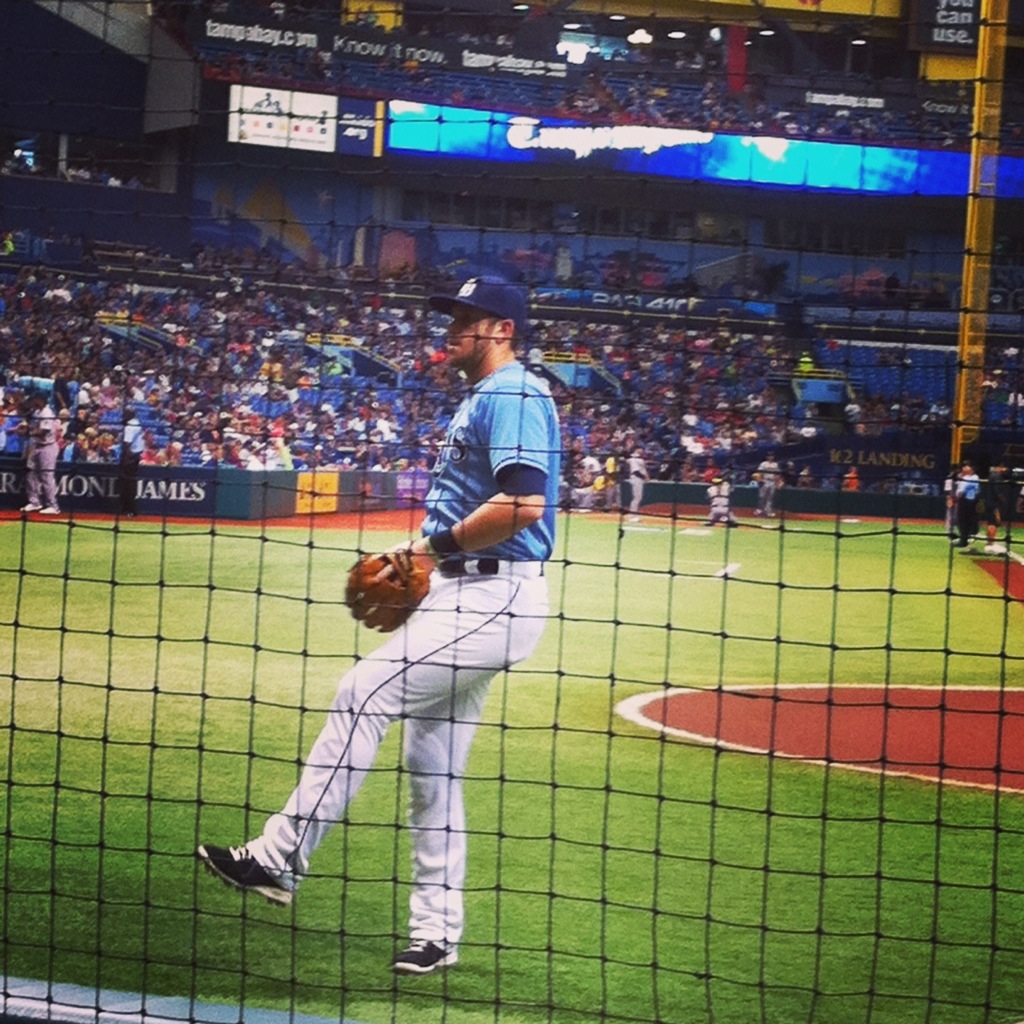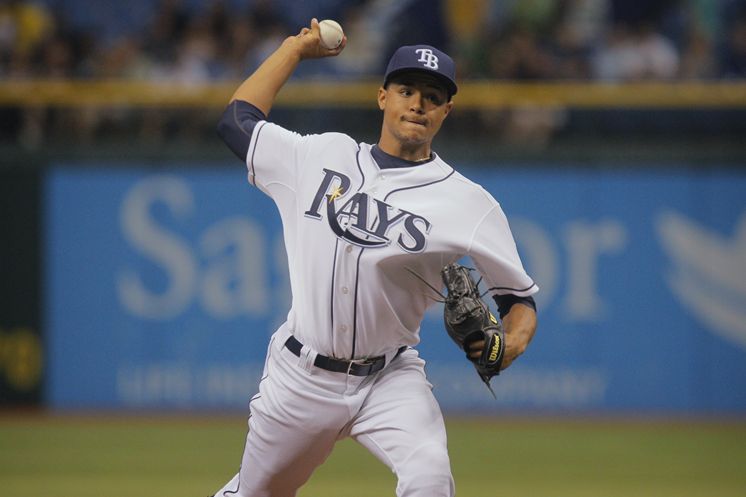
By: Michael Nazzaro
This game was about Chris Archer. No one else, well maybe Desmond Jennings, but we’ll get to that. Archer, after getting touched for five runs in four innings against the Indians, came out swinging. After hitting Nate McClouth to start the game, Archer settled down and induced two ground balls, from the next two batters, the second being an inning ending double play. He cruised through the first two and two/thirds innings before hitting a rough patch, the only one he would hit all night, walking Chris Dickerson, then walking Nate McClouth followed by a line drive to center field by Manny Machado, scoring Dickerson for Batlimore’s only run. After that, he coasted through the next four innings, allowing only one more hit on a misplay by Jennings in center.
That’s not to discredit Jason Hammel for a fairly decent outing. Though he lacked some command on the breaking stuff tonight, he kept the Rays offense in check for the most part. Hammel came into the game with a 5.43 ERA, though he had a 7-3 record. On the road however, Hammel was undefeated, going 6-0 with a 4.17 ERA. Unusual, but also signified that the O’s could score behind him. Hammel held the Rays to no runs and three hits through six innings. It was the seventh that would be his unraveling. After going 0-2 on Loney, Hammel hung one in there and Loney lined it to center for single. The very next pitch, Desmond Jennings would see right down the middle and he took advantage of it, hitting his sixth homerun of the season, his first since May 21st, giving the Rays the lead. Hammel would get Scott to ground out and Molina to strike out before surrendering a single to Escobar. This would be the end of his night. Troy Patton came on next and got Zobrist to fly out to center to end the inning.
The Bulldog would come in to the bottom of the O’s line up and did not disappoint, getting Dickerson to pop out and Flaherty to strike out. The next batter, McClouth, He pitched well against, and seemed to have gotten him to strike out looking on a 3-2 pitch, but the home plate umpire, Lance Barrett, disagreed and gave McClouth the pass. Peralta would come back to Machado to pop up to third on the next at bat, ending the top of the 8th.
The Rays put up an uneventful bottom of the 8th, going down in order, but this led to “Rodney Time” as Fox Sports Florida called it. I’ve been nervous every time Rodney has come on this season, especially against the middle of the line up, but I needn’t fret tonight. Rodney came in and pitched. Two pitches to Markakis and he grounds out to third on a nice stop by Longo, for pitches to Jones and a strike out, three pitches to the ever dangerous Chris Davis and a strike out.
The Good
- Archer made an amazing bounce back tonight. Throwing 84 pitches over seven innings, Archer allowed only two hits and two walks (both in the third inning), while relenting only one run. Even late, he was throwing well, hitting 97 MPH on the gun in the seventh. He threw 94 pitches through 4 innings his last time out, en route to a loss. If this is the Archer we’re going to see, I like it.
- Loney looked great again at the plate. I swear, this dude continues to be one of the most pleasant surprises this season. I remember when the Rays signed him, I was completely indifferent. He went 2-4 tonight with a single and double. His season average is .332.
- 2013 Rodney looked like 2012 Rodney. He threw 9 pitches, 8 for strikes, 4 swings and misses, and 2 looking. He baffled the three batters he faced, when they expected fast, they got slow and vice versa. He had excellent command. Hopefully this is the road to correcting his season (Editors note: Rodney’s strung together 7-1/3 consecutive scoreless innings, relenting two walks and a hit in that span).
- It’s also worth mentioning that over the past ten games, the Rays bullpen has a 1.88 ERA. If that isn’t a good sign, I don’t know what is.
The Bad
- The Rays offense scored twice. This is the third time in four game the Rays have scored two runs or less. And this is against a guy who just doesn’t have that good stuff. Whatever is going on needs to be corrected and quick, because our pitching can’t always hold up these close games.
- Longoria looked, well, bad at the plate. Either he was swinging for the fences on pitches and missing or was treading lightly and grounding out. If there’s someone we need to hit, it’s him and his power bat.
Line for Archer: 7.0 IP 2H 1R 1ER 2BB 2SO 84 Pitches
Line for Hammel: 6.2 IP 6 H 2 R 2ER 2 BB 3 SO 1 HR 105 Pitches
The New What Next
Jeremy Hellickson will attempt to string together his second consecutive victory Saturday, when he takes the hill opposite of the highly touted Kevin Gausman. You can read about the pitching match-up here.
Rays 6/8/13 Starting Lineup
Joyce RF
Zobrist 2B
Johnson LF
Longoria 3B
Loney 1B
Jennings CF
Scott DH
Lobaton C
Escobar SS
Hellickson RHP
Rays 6/7/13 Starting Lineup
Joyce RF
Zobrist 2B
Johnson LF
Longoria 3B
Loney 1B
Jennings CF
Scott DH
Molina C
Escobar SS
Archer RHP
Noteworthiness
Looking Backward While Moving Forward: Rays Lose to the Tigers 5-2, Enter the Orioles
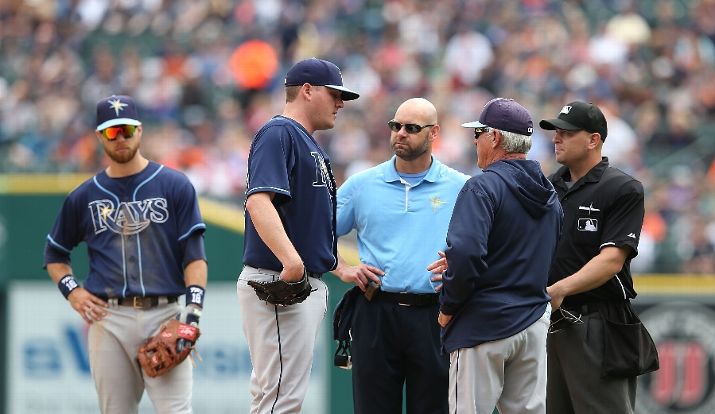
Tampa Bay dropped the rubber match of the Tigers series Thursday by a score of 5-2, in gem of well pitched game by Max Scherzer. The same culprits that killed the Rays throughout the course of the series — Victor Martinez, Prince Fielder, and Miguel Cabrera — were responsible for Detroit’s five runs, while the Rays offense couldn’t muster enough umph in a game where a win was obtainable — at least when former Ray Joaquin Benoit took the mound in relief.
Roberto Hernandez was kind of blah on the mound. He had flashes of good stuff, especially between the last out of the first inning and the second out of the fourth inning, retiring eight consecutive batters on four strikeouts and four ground-outs. However Hernandez only attacked the zone sporadically and — like Jeremy Hellickson — got beaten up when he was forced to throw pitches over the heart of the plate after falling behind in the count.
Scherzer on the other hand was dominant, relenting only one run on a James Loney RBI single in the sixth inning. Scherzer lasted seven strong innings, giving up only four hits and a pair of walks on 100 pitches (66 for strikes). Allowing only one runner to reach scoring position in the front six innings, Scherzer effectively kept the Rays hitters from getting any lift on the ball, inducing five line-outs or ground-outs. Tampa Bay had opportunities to put more runs on the board, however Desmond Jennings played the role of rally killer on this fateful day — striking out to end the sixth inning, and flying-out just a hair shy of a three-run homer to end the eighth inning.
Moving forward. The Rays will welcome the Baltimore Orioles into Tropicana Field Friday, for a three-game weekend series. Tampa Bay has an opportunity to leapfrog Baltimore who sits a game-and-a-half in front of the Rays in third place. It won’t be easy. Like the Rays, the Orioles have won seven of their last 10 games, though they’re coming off a sluggish win and loss to the Houston Astros. Tampa Bay has had success against both Jason Hammel and Chris Tillman, so it’s really incumbent on the Rays starters to keep Adam Jones, Nick Markakis, Chris Davis and the rest of the Orioles bats in check.
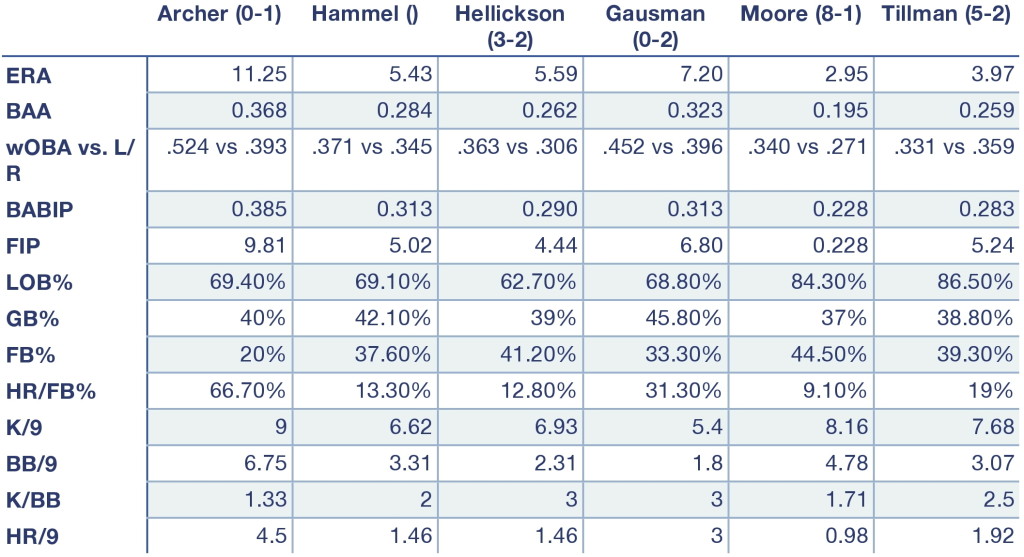
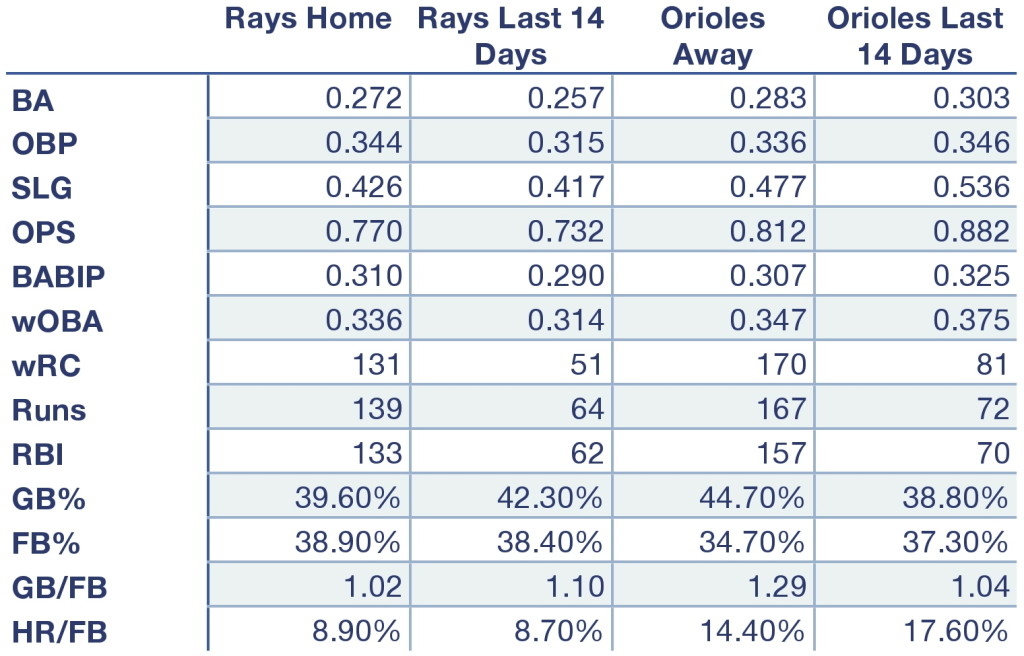
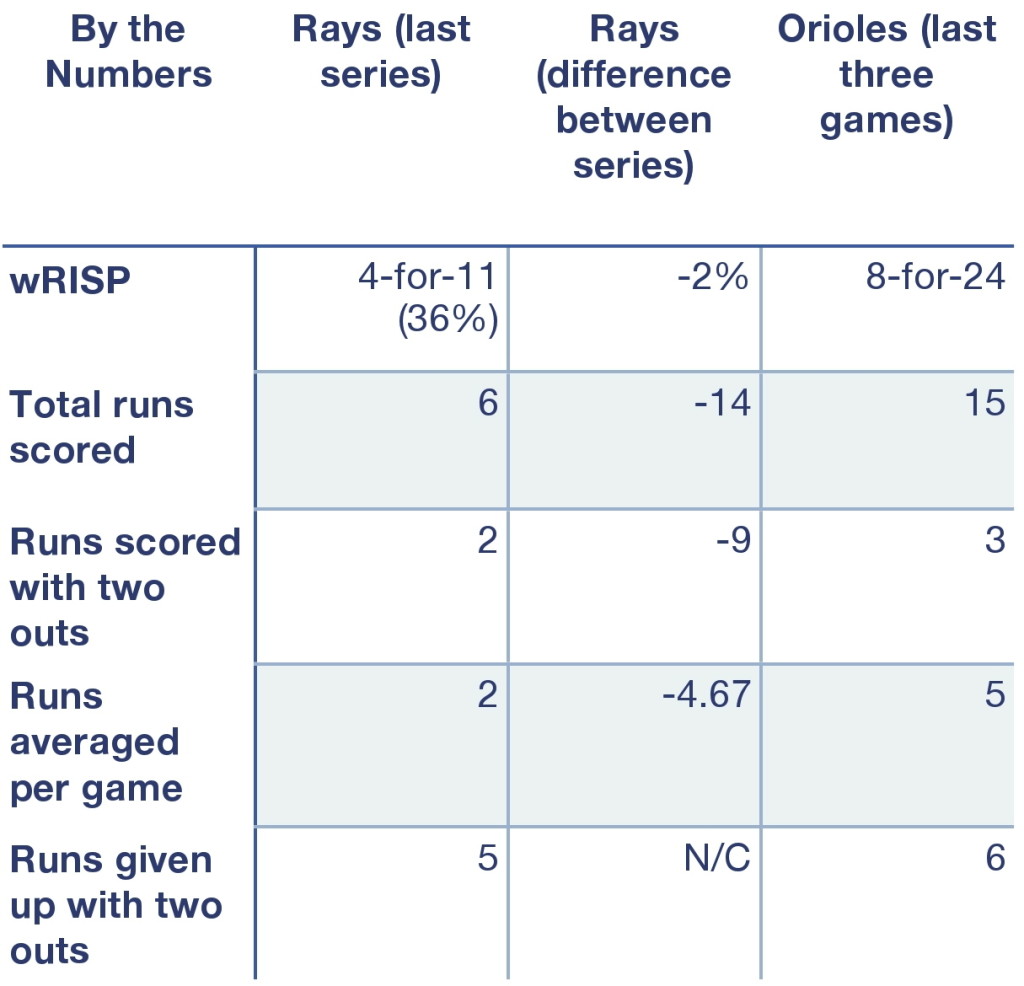
Jason Hammel: Per Rotowire, “Hammel was ejected from Saturday’s start against the Tigers after hitting Matt Tuiasosopo in the shoulder, MASN Sports reports.” The Rays last faced Hammel on the 17th of May, in a game where they were able to touch him up for seven runs on seven hits and two walks. Since then, Hammel had a couple of quality starts against the Yankees and the Nationals, giving up only two runs in each start. But Hammel lasted only three innings in his very next start, giving up five runs on five hits, including three homers to the Tigers. The 30 year-old RHP has now given up four or more runs in five of his 12 starts. Key match-ups: Kelly Johnson (8-24, 2B, 2 HR, 6 RBI), Jose Lobaton (1-2, 2B), James Loney (10-33, 2 2B, 3 HR, 9 RBI), Jose Molina (2-8, 2B, BB), Luke Scott (3-9, 2B, 3 RBI, 2 BB), Ben Zobrist (4-7, 2B, HR, 2 RBI).
Kevin Gausman: Per Rotowire, “Gausman gave the Orioles six quality innings Sunday, allowing one run on five hits with no walks and four strikeouts against the Tigers.” The Rays have never faced the young 22 year-old who’s described as having, “A 96-98 MPH four-seam fastball which features significant arm side run and sink when located down in the zone.” His fastball frequently touches 99 MPH, even in later innings. When elevated up in the zone, his fastball maintained velocity but flattened out and became hittable. Gausman has a clear preference to keep his fastball down in the zone — where it was most effective — a tendency which may explain his 51.5% ground ball rate this year.
Also, “His changeup is his best offering. He maintains his arm speed on the 82-84 MPH pitch, which features a massive velocity differential from his fastball. The change is not only deceptive, it has exceptional movement. Its drop and fade are so dramatic they mimic a breaking ball.”
Chris Tillman: Per Rotowire, “Tillman went seven innings Tuesday, allowing one earned run on four hits and two walks with eight strikeouts against the Astros, improving to 5-2 on the season.” The Rays have beaten the Orioles twice this season when Tillman has been on the bump. The tall RHP gave up four runs on six hits in five innings of work back in April, following that outing a month later by giving three runs on five hits (including a pair of homers) and a walk. Tillman has been effective with the fastball in two-strike counts during his current three-game win streak. Opponents are 3-for-26 (.115) against Tillman’s fastball in two-strike counts. Key match-ups: Sam Fuld (2-5, 2B, 2 RBI), Kelly Johnson (2-5, HR, RBI), Matt Joyce (4-16, 2B, 3B, HR, 2 RBI, BB), Evan Longoria (8-18, 2B, 3 HR, 4 RBI, 3 BB), Ryan Roberts (1-3, HR, RBI, 2 BB), Luke Scott (1-2, HR, RBI).
Noteworthiness
- Tampa Bay leads the season series 5-4. The Rays lead the overall series 70-63 at the Trop.
- The Orioles have won 11 of their past 16 games.
- Chris Davis is making his own run at the Triple Crown, leading the league in homers (20), second to only reigning AL MVP Miguel Cabrera in batting average (.357) and RBIs (52).
- LHP Wei-Yin Chen on the disabled list.
- The Orioles lead the majors with 84 homers.
- Baltimore’s staff has a 4.96 ERA over a 16-game stretch, but the Orioles are batting .303 and producing 5.3 runs per game.
- Rays LHP reliever Jake McGee was pulled from Thursday’s game with a left shin contusion, after getting hit with a Miguel Cabrera come backer. The injury didn’t seem serious, and he is presumably listed as day-to-day.
…Because Sometimes You Can Hate the Player and the Game: A Tale of PED’s, A-Rod and the Yankees, and MLB
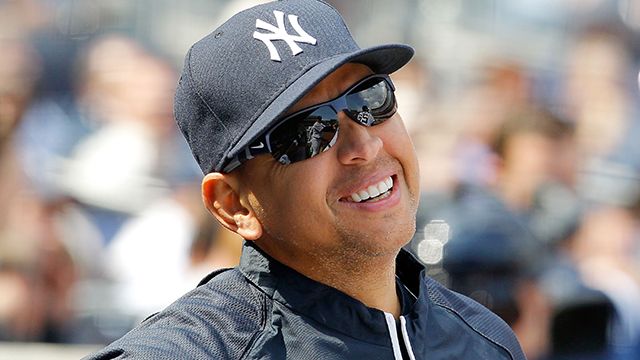
A disclaimer of sorts: I’ve been bugging a buddy of mine for a while to write for X-Rays Spex. At long last — and after a lot of coercion by means of candy, etc — David has decided to put this piece together. Here’s to hope there are more articles on the horizon!
By: David Wise
Over the course of the last decade the highest levels of athletics in the United States has become a minefield of over political aberrance, the sporting world becoming nearly unrecognizable. The most notable of these over politicized happenings being the many scandals involving college athletes brokering trades and accepting gifts, congress’ decision to get involved in the structure of the college football postseason, and the congressional hearings regarding the use of performance enhancing drugs in Major League Baseball.
I’ll try to keep this part as brief as I can because it includes an entirely different argument regarding morality, the fact of the matter is that if you were to ask every college athlete who was found to be guilty of brokering trades or accepting gifts and donations you would most often find that many of them made those extremely difficult decisions in order to help their families and friends out of less than desirable situations. There have been some real careless and senseless incidents, trading jerseys for tattoos and the like, however the consequences in large part tend to effect more than just the individuals at fault. Alongside the consequences against individuals for their actions, which run the gamut from suspensions to forfeiting of awards, many universities have had various impositions placed upon their athletic teams, competitive bans, entire team death penalties, wins forfeited, for the actions of few, the whole was held accountable, and generally with reason.
The model for collegiate athletics often holds the university, or at the very least the athletic department, the coaches, etc accountable in addition to the individual offenders. If you ask why this is you will find a very clear and logical stream of reasoning. The university profits incredibly from its major athletics and it invests a great deal of its profits back into those athletic departments by hiring the best coaches and athletic staffs that they can, they pay millions to have these people in place and spend millions more recruiting the best possible talent to represent the university. Basic rationality dictates that when one makes a major investment they monitor and protect it, it is their responsibility to get the greatest reward for their risk. When the risk becomes a liability and when it becomes an absolute disaster, it is only right for the investor to continue to bare a great deal of the responsibility for what went wrong.
If we are punishing entire college athletic teams with competitive bans for the actions of some of their student athletes, actions which are more often than not, survival oriented then why should we not also be punishing professional athletic organizations when their players, especially their superstar players, their major investments, whom they should be and most likely are keeping under a microscope, fail and succumb to incredibly poor judgment. When Alex Rodriguez left Seattle for Texas his career and his numbers began to rise to astronomical superstar levels, levels which at the time hardly seemed to be too out of the ordinary for any top echelon player, considering the previously unbreakable single season home run record had been broken six times by the end of Rodriguez’ first season in Texas. I could buy that at this point in time that the Rangers and Rodriguez’ representation were not aware that he was using any sort of banned substances because at the time, everyone was putting up insane numbers and even the most middle of the road players looked like body building champs, and I could even buy that if they were aware, they were unconcerned as the use of steroids during that time was as prominent as the use of greenies and cocaine in previous eras, while it was not a point of pride for the organization, there was a significantly positive return on their investment for a period of time.
When the Yankees and Alex Rodriguez agreed to the monster contract that freed him from being the best part of a bad team in Texas perhaps, they thought that this was a great athlete finally reaching his brightest potential — the beginning of the peak of his career and this was the once in a generation player that we had all believed him to be.
We all recall what happened in 2009 when it was revealed that Rodriguez had used PEDs, at the very least during his years in Texas, and his denial of having tested positive during what was supposed to be an entirely anonymous sampling of PED use within the league. Rodriguez signed a new contract with the Yankees in 2007, one which is chock full of multimillion dollar performance based incentives, incentives having to do with his becoming the all-time home run king, one would be naïve to think that an organization as prolific as the Yankees would not have every last iota of their bases covered when making such an ambitious pursuit of an investment of the highest caliber, and I will even go as far as being naïve myself, perhaps they didn’t know, I’ll give them the benefit of the doubt and say that they were in the dark.
The final point of all of this is that if we are going to impose suspensions and levy fines upon the individuals at fault then we must also hold accountable the organization which has invested and directly benefited over the years from the successes of their employees, especially in the cases of repeat offenders, and especially when those repeat offenders are amongst the best and most notable players of an entire generation. That these same individuals have been able to perpetrate the same offenses more than once shows an incredible failure on the part of the organization with respect to their fans, those who stand by the organization during the winning seasons and the losing seasons, the good trades, the bad trades, the dynasties and the forgettable decades. Baseball fans display an undying loyalty to their teams. Many will go down with a sinking ship, convinced that it is still afloat and sailing towards a better place (See: Cubs fans). But there are some things which are unforgivable; undignified moves that feel like stabs in the back, a dignified acceptance of accountability by the organization — admitting their wrong when they are wrong — will ultimately spare them am greater level of humiliation. However, when the organization in question is one that is as globally polarizing, who embrace both the positivity from supporters and negativity of their adversaries, the humiliation may not be enough. A more perfect situation for Major League Baseball to set precedent for any future offenses, there is not.
Any losses incurred due to fines levied, playoff appearances missed due to competitive bans, and prospective players adding to an organizations legacy who will pass on a team for better money or a chance at a championship which would not be available to them on a team paying the price for offenses, could be recouped or resolved. But tainting the morality and sportsmanship of baseball will become irreparable at a certain point, and demonstrating a severe recompense for all parties involved is the only way to insure that all parties are doing their job.
Looking Backward While Moving Forward: Rays, Cobb Shutout Tigers 3-0
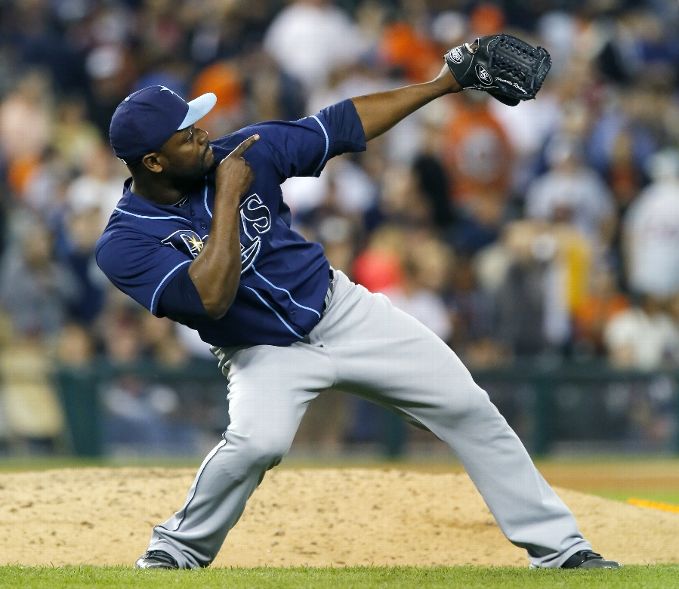
With a pair of starting pitchers posting +55% ground ball percentages, most of us figured that Wednesday night’s match-up between Alex Cobb and Doug Fister would be a pitching dual of the ages. However, I’m not certain if any of us would have foreseen a double shutout going into the eighth inning. Though one pitcher had to lose, both Cobb and Fister were excellent Wednesday night. If I may, it’s just a damn shame that Alex Cobb couldn’t be credited with the win; after all, Cobb was incredible.
Ultimately posting a 7.2 IP/5 H/0 H/0 R/3 BB/7 K line, Cobb threw 102 pitches (72 for strikes) after coming off a missed start because of a fingernail issue. Cobb was absolutely deadly with his change-up, throwing 34 of 42 for strikes (nine swings and misses). Aptly described as the split-change of destruction, Cobb used this as his put-away pitch for a handful of his seven strikeouts, making sluggers like Prince Fielder look like dear in the headlights. Cobb also impressively kept the ball down, inducing 12 ground-outs.
Joe Maddon called for the intentional walk of Miguel Cabrera on a couple of different occasions — a contentious pair of calls for many (editors note: I thought the strategy was perfect). But the results speak for themselves: twice they walked Miggy — in the sixth and eighth innings — to put runners in scoring position with two outs, and twice they negated the threat posed by Prince Fielder, getting the Tigers slugger to strike out swinging on an Alex Cobb change-up and a Joel Peralta splitter.
In the same manner that the Rays game plan against Detrot was perfect, so too was Fister and the Tigers’ plan against Tampa Bay. The Rays weren’t able to do much against the sinker baller, threatening to score only once between the first and ninth innings. And when the Rays did get on base, Fister was able to induce weak contact forcing the Rays into a pair of double plays. But someone had to score, and in the ninth inning Tampa Bay plated three runs.
Sam Fuld lead off the inning with a hard bunt up the first base line. But when a charging Price Fielder tried to tag Super Sammy, Fuld — somehow — was able slide/dive out of the way to get on base. Ben Zobrist followed that up with a sharply hit single to right, sending Fuld to third. With men on the corners and no outs, Matt Joyce hit a sac-fly to center which plated the Rays go ahead run, while Zobrist moved up to second on an errant throw home. The pressure was on Fister, and he assuredly felt it.
Fister quickly got ahead of Longoria, but yanked a wild pitch which sent Zobrist to third. After a pair of fouls and a ball, Longo shot an RBI double to left-field, giving the Rays an insurance run. Fister’s night was over at that point, but that wouldn’t be the end of the Rays scoring. Drew Smyly came on in relief of Fister, quickly getting James Loney to line out to short. Then with a runner in scoring position and two outs, Desmond Jennings shot a 1-0 triple to the right-center gap, giving the Rays a three-run lead they wouldn’t relinquish.
Fernando Rodney came on to close the game out. Rodney was a bit shaky — something that could be blamed on having a few days off between outings. The Rays closer quickly walked Victor Martinez on six pitches, but was able to follow that up with a Jhonny Peralta swinging strikeout on a nasty 98 MPH fastball. Alex Avila was next, shooting a 1-1 single to right which moved Martinez to second. But Rodney was able to hold it together, striking out Omar Infante on an 86 MPH change-up, and following that with an Avisail Garcia foul-out to end the game. It may have taken 21 pitches, but Rodney was ultimately able to shoot the moon, now stringing together 6-1/3 consecutive innings of scoreless baseball.
The New What Next
Tampa Bay will attempt to take it’s third straight series on the road, in the rubber match of the three game set. Roberto Hernandez will take the mound for the Rays, opposite of a very tough Max Scherzer. It won’t be easy — Scherzer has been very good. But we all know how dangerous Hernandez can be when he’s able to locate his sinker and fastball. You can read about the pitching match-up here.
Rays 6/6/2103 Starting Lineup
Fuld LF
Zobrist 2B
Joyce RF
Longoria 3B
Loney 1B
Jennings CF
Scott DH
Molina C
Escobar SS
Hernandez RHP
Noteworthiness
- In seven starts following a Rays loss this year, Alex Cobb is now 5-1 with a 2.01 ERA.
- Per MLB Trade Rumors, the Rays have inked a minor league deal with catcher Jesus Flores to a minor league deal. Flores, 28, adds catching depth to the Rays organization, and will report to Triple-A Durham. Flores posted a .451 OPS in 80 plate appearances for Triple-A Albuquerque this season after the Dodgers signed him to a minor league deal in January. The catcher hit .241/.289/.375 over 1014 career PA in the Major Leagues with the Nationals since 2007.

